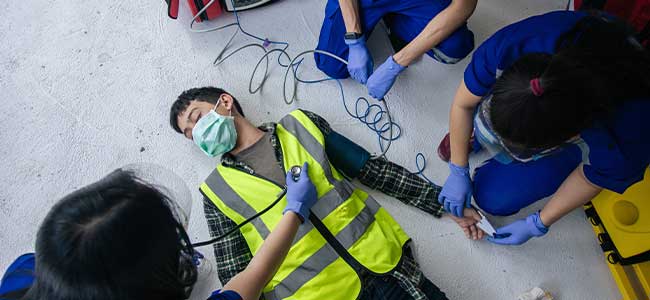
Empowering Workplace Safety: Essential Defib & CPR Practices
Implementing and maintaining robust CPR and defibrillation programs in the workplace are critical to enhancing emergency preparedness and saving lives.
- By Ian Durrant
- Sep 10, 2024
Cardiac events are one of the leading causes of death in the workplace, and immediate response is critical to increasing the chances of survival. This article delves into the essential practices of defibrillation and cardiopulmonary resuscitation (CPR) in the workplace. We will explore practical applications, best practices for maintaining readiness, compliance requirements, and considerations for hybrid work environments, aiming to equip safety and health professionals with actionable insights to enhance emergency preparedness.
The Importance of Defibrillation and CPR
Sudden cardiac arrest (SCA) is a medical emergency where the heart suddenly stops beating normally. It can happen to anyone, anytime, anywhere. Immediate defibrillation and high-quality CPR can significantly increase the chances of survival. The integration of comprehensive on-site programs with Automated External Defibrillators (AEDs) and trained personnel in workplaces is crucial to addressing this health threat effectively.
Defibrillation, using an AED, involves delivering a controlled electric shock to the heart to “reset” the heart. CPR, on the other hand, helps maintain vital blood flow to the heart and brain until professional medical help arrives. When both are used promptly, they can significantly reduce the mortality rate from cardiac arrests in the workplace. According to the American Heart Association, immediate CPR and early defibrillation with an AED can increase the survival rate from sudden cardiac arrest to 60% or more.
Practical Applications of Emergency Response Techniques
1. Training and Drills
Regular training and emergency drills are paramount. Training should cover CPR techniques and proper use of AEDs, ensuring employees can act swiftly and effectively. Various organizations offer comprehensive training programs that can be tailored to specific workplace environments.
Scenario-Based Training: Incorporate scenario-based training to simulate real-life emergencies. This helps employees react appropriately under pressure and increases their confidence in handling cardiac events. By practicing realistic scenarios, employees can better understand the urgency and correct procedures required during an actual emergency.
Frequency of Training: Conducting annual or bi-annual refresher courses ensures that employees remain proficient in CPR and AED usage. Regular training updates also help incorporate any new guidelines or techniques. Ensuring that employees remain up-to-date with their training is critical, as it helps to reinforce knowledge and skills, reducing the chances of hesitation or errors during a real emergency.
This article originally appeared in the September 2024 issue of Occupational Health & Safety.